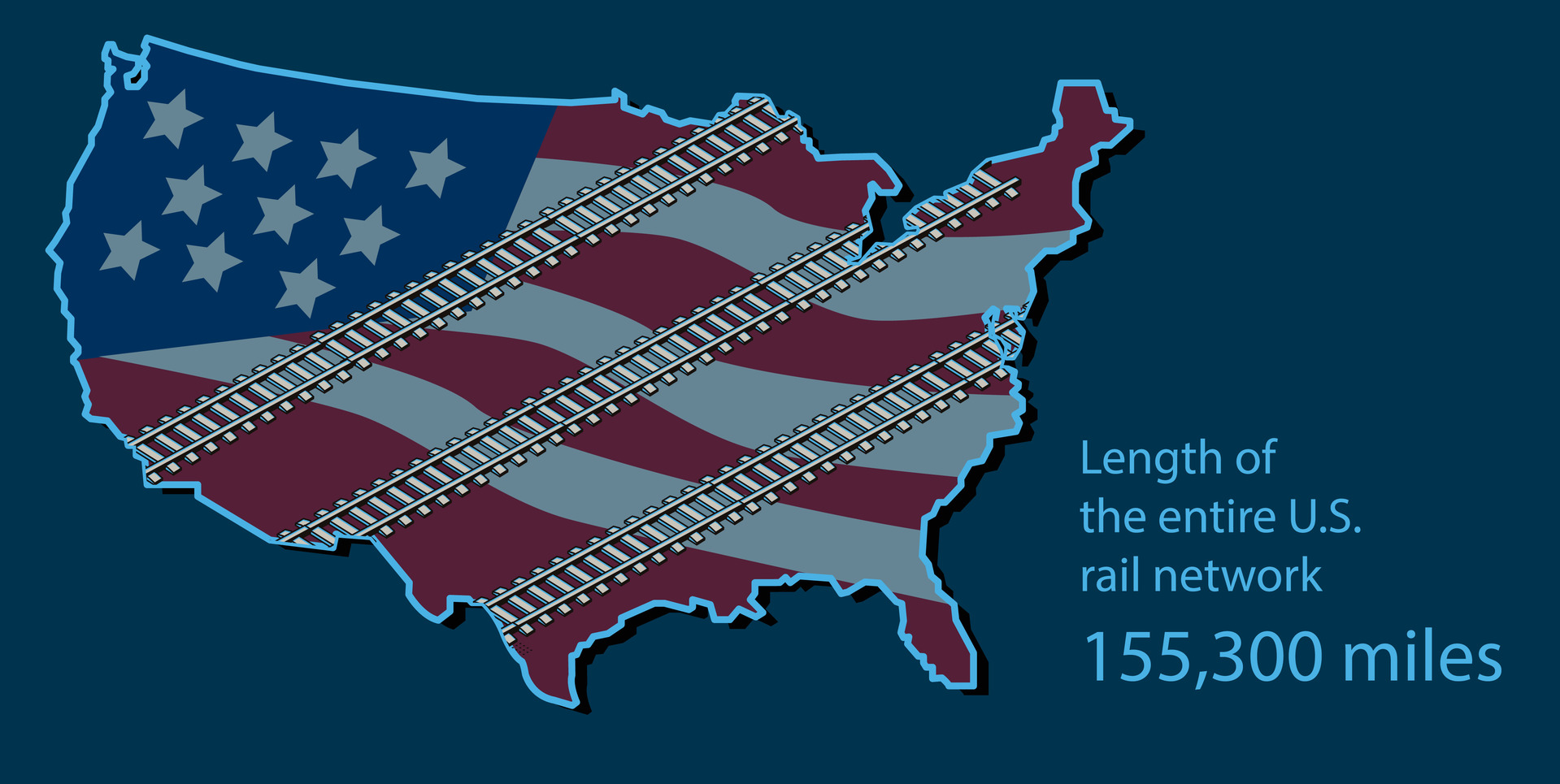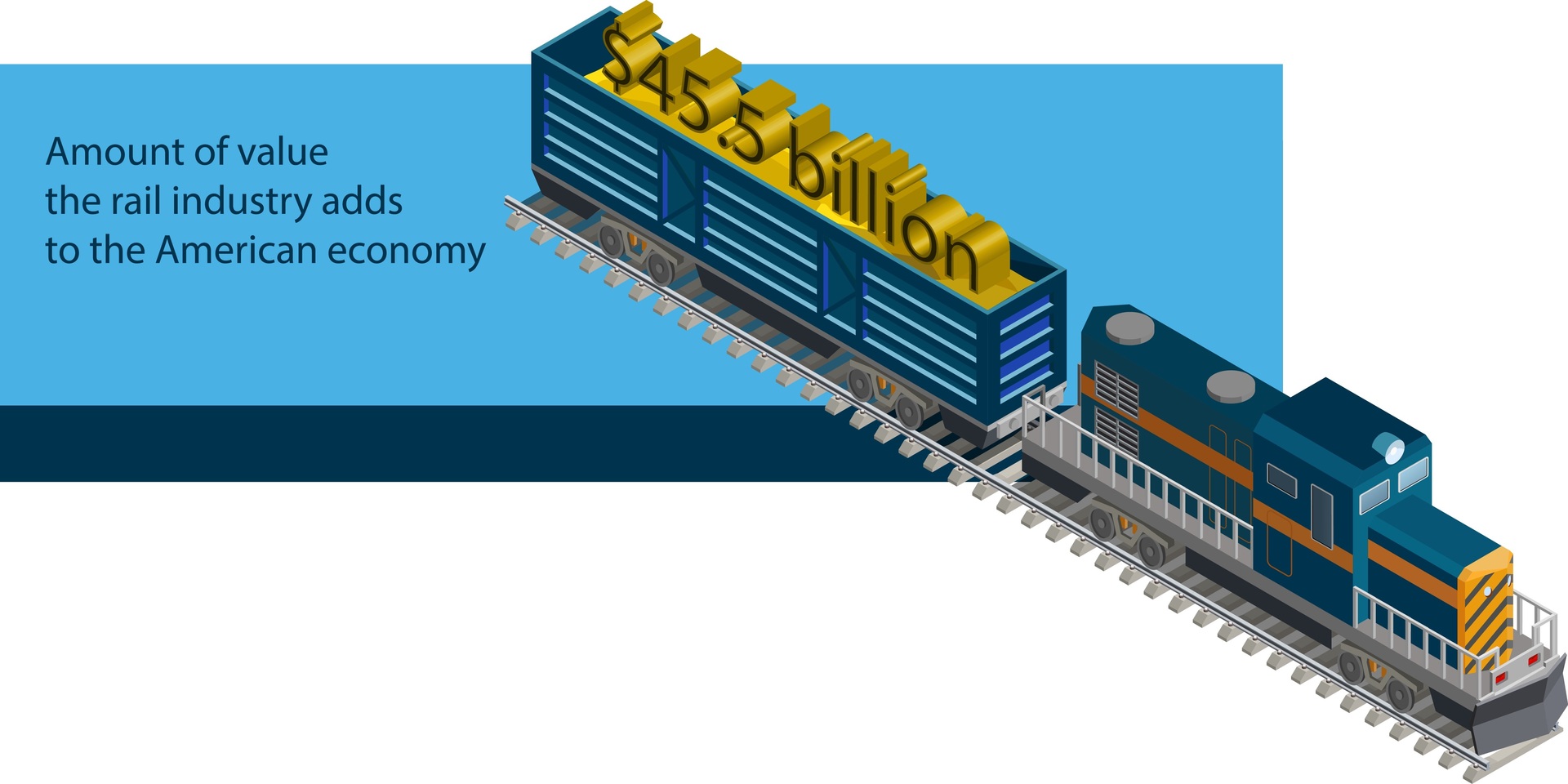The American railroad system symbolizes the country’s past, present, and future. For years, trains were the primary mode of long-distance travel and distribution, helping to transform America from a fledgling nation to a global industrial powerhouse.
Over the last century, the railroad’s role in American society has changed considerably; while automobiles and airplanes have become more popular for passenger travel, the rail system still serves as a crucial component of the freight logistics industry, continuing to bolster the United States’ position in the global economy.
U.S. Railway Industry: By the Numbers
Today, for National Train Day, we’re highlighting a few key statistics relating to the American railroad sector.

- 155,300 miles — Length of the entire U.S. rail network
- 80% — Percentage of the U.S. rail network used for freight
- 25.3 billion tons — Projected freight demand for 2045

- 1.6 trillion ton-miles — Approximate volume of goods transported throughout the U.S. using the freight rail system
- 26,546 — Number of U.S. Class I railroad locomotives as of 2017
- 19.5 years — Average age of North American freight train cars
- $17 billion — Total spent in 2015 investing in updated equipment, systems, and extensions for the passenger railroad infrastructure

- $45.5 billion — Value that the rail industry adds to the U.S. economy
- $21.24 billion — Revenue that Union Pacific, the second largest railroad system in the U.S., earned in 2017
Riding Into the Future
Transporting goods and people from breezy coastlines to majestic mountains to bustling cities and everything in between, the American rail network serves as a vital component in the United States’ infrastructure.

![Snapshot of the U.S. Railway Industry [Statistics]](/insights/_next/image/?url=https%3A%2F%2Fthomasmkt.wpengine.com%2Fwp-content%2Fuploads%2F2024%2F01%2F750px-6099.png&w=3840&q=75)